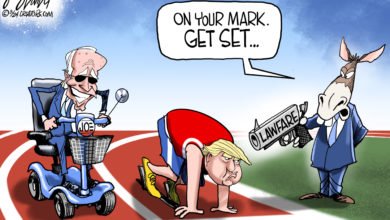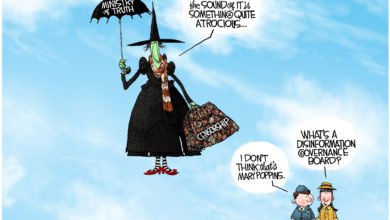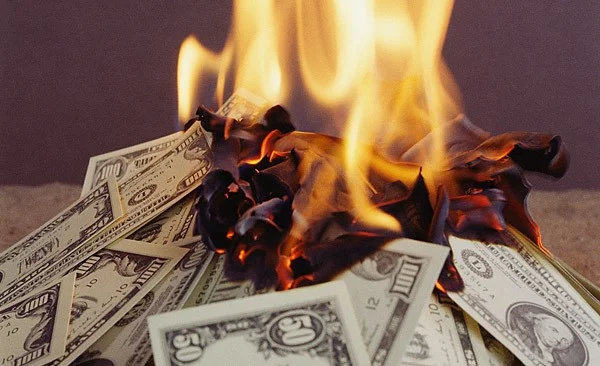The US Is Starting To Feel The Pain Of Years Of Massive Deficit Spending

- The interest on the U.S. national debt is increasingly becoming more costly as interest rates rise and more debt is taken on.
- Average Americans will be stuck footing the bill from reckless spending as a larger portion of the U.S. expenditure goes toward servicing the debt.
- “As the debt grows and the net interest feedback loop intensifies (new debt to simply pay the credit card fees on the old debt), we’ll see higher inflation, interest rates, and more and more sluggish economic growth,” Richard Stern, director of the Grover M. Hermann Center for the Federal Budget at the Heritage Foundation, told the Daily Caller News Foundation. “Further, as our economy declines and federal finances careen towards oblivion, we risk having federal debt and the dollar itself be seen as increasingly risky investments.”
The U.S. took on huge amounts of debt while interest rates were low, which are now being rolled into new Treasury bonds, increasing interest payments drastically and leaving average Americans to foot the bill.
The amount of money spent toward interest on the U.S.’s national debt has nearly doubled from 2020 to 2023 and could double again by 2032, meaning an increasing amount of American tax dollars will have to go toward funding it, according to the Committee for a Responsible Federal Budget (CRFB). The majority of U.S. government debt was issued at a time when interest rates were far lower, and as they rise, Americans will be stuck with the bill as the debt becomes an increasingly large portion of the U.S.’s expenditure.
“We are now on track to have paid more in net interest costs this year than on the entire military,” Richard Stern, director of the Grover M. Hermann Center for the Federal Budget at the Heritage Foundation, told the Daily Caller News Foundation. “That is yet more debt to pay the credit card fees on the old debt — a vicious cycle. This feedback loop of spending pulls more and more money out of the hands of hardworking Americans, stifling the creation of new businesses and pushing families further into the hole of inflation taxes.”
The Federal Reserve kept its federal funds target range low following the recession in 2008 in order to bolster the economy, keeping the effective rate under 0.25% until around 2016, enabling a cheaper take-on of debt during that time, according to the Federal Reserve Bank of St. Louis (FRED). The current upper limit on the federal funds rate is at the highest point since 2001, between 5.25% and 5.50%, driving up interest rates along with it.
Almost 60% of the debt that the U.S. currently owns originated when the average interest rate on U.S. ten-year Treasury notes was less than 3%, while 75% of debt held in three-month Treasuries was acquired at that same rate, according to the CRFB. That debt is now being rolled into new Treasuries at much higher rates, with ten-year Treasuries at a rate of 4.61% and three-year Treasuries at a rate of 4.89% as of Sept. 27, according to FRED.
“As interest rates rise, bond yields rise. So all bonds, including US Treasuries (which are US government bills, notes, and bonds), see their yields rise as rates rise,” Peter Earle, an economist for the American Institute for Economic Research, told the DCNF. “What that means is that as the Fed has been raising the policy rate (the Fed Funds rate) to quash inflation, the US Treasury has had to make rising payment amounts on the outstanding US debt. Presently, the US is spending just over $800 billion per year to service its debt. That’s 15 percent of the total annual federal spending.”
U.S. national debt is now growing faster than the economy. Probably fine pic.twitter.com/rn9WFbuGcd
— Barchart (@Barchart) September 28, 2023
The U.S. national debt reached $33 trillion for the first time ever in September, having already increased by around $5 trillion since President Joe Biden was inaugurated. Biden has pushed high-spending programs like the American Rescue Plan, which introduced $1.9 trillion in new stimulus spending, as part of his economic agenda.
“As the debt grows and the net interest feedback loop intensifies (new debt to simply pay the credit card fees on the old debt), we’ll see higher inflation, interest rates, and more and more sluggish economic growth,” Stern told the DCNF. “Further, as our economy declines and federal finances careen towards oblivion, we risk having federal debt and the dollar itself be seen as increasingly risky investments. This could lead to global de-dollarization, much higher inflation rates and a loss of our position as the center of global commerce and investment.”
Several countries expressed a desire to remove the U.S. dollar as the global reserve currency at the Brazil, Russia, India, China and South Africa (BRICS) summit in August, which would mean that countries would stop using the dollar in international trade. One of the possible effects of de-dollarization could be hyperinflation as the dollars circulating abroad rush back into the U.S. market, widening the money supply for Americans.
The credit rating for the U.S. was downgraded in August by top credit agency Fitch Ratings, citing future fiscal uncertainty and possible deterioration as buying U.S. Treasuries becomes a riskier bet. The lower credit rating means that the cost of taking on debt for the federal government could increase as investors demand better interest rates to account for higher risk.
“Higher debt crowds out other types of government spending that might be spent in more productive ways,” Earle told the DCNF. “It erodes confidence in the US dollar and makes the US a less desirable place to do business. Being saddled with colossal debt also reduces the flexibility to undertake emergency spending should a crisis arise. There’s also a strong argument that astronomical levels of government debt are a national security issue: a default or some other adverse event could create political instability domestically and arguably make the US more beholden to foreign US debt holders, some of whom are not allies. America’s high national debt is a threat to all Americans, and a bigger one for the yet unborn, should it continue to grow.”
The White House did not immediately respond to a request to comment from the DCNF.
Content created by The Daily Caller News Foundation is available without charge to any eligible news publisher that can provide a large audience. For licensing opportunities of our original content, please contact licensing@dailycallernewsfoundation.org




